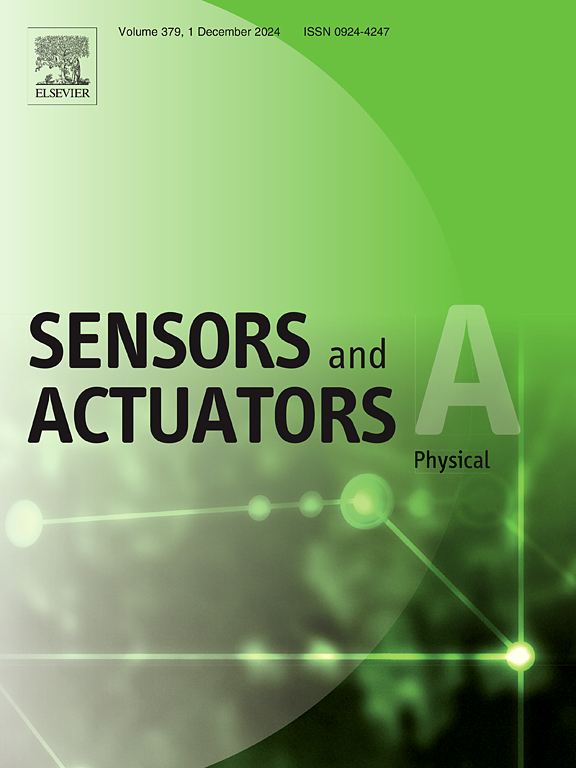电子鼻结合有效的深度学习方法,可识别不同储藏条件和储藏期下的大米品质
IF 4.1
3区 工程技术
Q2 ENGINEERING, ELECTRICAL & ELECTRONIC
引用次数: 0
摘要
温度是影响储藏期间大米质量的关键因素,因此找到一种有效的方法来检测储藏期间的大米质量至关重要。气体信息是大米品质变化的直观反映。在这项工作中,深度学习算法与电子鼻(e-nose)相结合,提供了一种快速检测大米品质的方法。首先,利用 PEN3 电子鼻系统,收集在两种不同温度和时间条件下储存的大米的气体信息。其次,提出了一个多分支自关注模块(MSAM)来关注重要的气体特征,从而提高电子鼻的分类性能。第三,建立 MSAM 网络,以识别各种储存条件和储存期下的大米气体信息。烧蚀分析以及与最先进的气体分类方法的比较表明,MSAM-Net 具有卓越的性能。在温度为 25 ℃、相对湿度为 35RH % 的条件下,MSAM-Net 的准确率达到 96.25 %,F1 分数达到 96.84 %。在温度为 40 ℃、相对湿度为 35RH% 的条件下,MSAM-Net 的准确率为 97.42%,F1 分数为 97.64%。总之,人工智能与气体感应的结合为稻米质量检测提供了一种有效的技术方法。本文章由计算机程序翻译,如有差异,请以英文原文为准。
Electronic nose combines an effective deep learning method to identify the rice quality under different storage conditions and storage periods
Temperature is a key factor affecting the rice quality during storage, and an effective method to detect the rice quality during storage period is crucial. Gas information is an intuitive reflection of changes in rice quality. In this work, a deep learning algorithm, combined with an electronic nose (e-nose), provides a rapid detection method for rice quality. First, using a PEN3 e-nose system, gas information from rice stored under two different temperatures and periods is collected. Second, a Multi-branch Self-attention Module (MSAM) is proposed to focus on important gas features, enhancing the e-nose's classification performance. Third, MSAM-Net is established to identify the rice gas information under various storage conditions and periods. Ablation analysis and comparisons with state-of-the-art gas classification methods show that MSAM-Net delivers superior performance. At a temperature of 25 ℃ and a relative humidity of 35RH %, MSAM-Net achieves an accuracy of 96.25 % and an F1-score of 96.84 %. At a temperature of 40 ℃ and a relative humidity of 35 RH%, MSAM-Net achieves an accuracy of 97.42 % and an F1-score of 97.64 %. In summary, the combination of artificial intelligence and gas sensing provides an effective technical approach for rice quality detection.
求助全文
通过发布文献求助,成功后即可免费获取论文全文。
去求助
来源期刊

Sensors and Actuators A-physical
工程技术-工程:电子与电气
CiteScore
8.10
自引率
6.50%
发文量
630
审稿时长
49 days
期刊介绍:
Sensors and Actuators A: Physical brings together multidisciplinary interests in one journal entirely devoted to disseminating information on all aspects of research and development of solid-state devices for transducing physical signals. Sensors and Actuators A: Physical regularly publishes original papers, letters to the Editors and from time to time invited review articles within the following device areas:
• Fundamentals and Physics, such as: classification of effects, physical effects, measurement theory, modelling of sensors, measurement standards, measurement errors, units and constants, time and frequency measurement. Modeling papers should bring new modeling techniques to the field and be supported by experimental results.
• Materials and their Processing, such as: piezoelectric materials, polymers, metal oxides, III-V and II-VI semiconductors, thick and thin films, optical glass fibres, amorphous, polycrystalline and monocrystalline silicon.
• Optoelectronic sensors, such as: photovoltaic diodes, photoconductors, photodiodes, phototransistors, positron-sensitive photodetectors, optoisolators, photodiode arrays, charge-coupled devices, light-emitting diodes, injection lasers and liquid-crystal displays.
• Mechanical sensors, such as: metallic, thin-film and semiconductor strain gauges, diffused silicon pressure sensors, silicon accelerometers, solid-state displacement transducers, piezo junction devices, piezoelectric field-effect transducers (PiFETs), tunnel-diode strain sensors, surface acoustic wave devices, silicon micromechanical switches, solid-state flow meters and electronic flow controllers.
Etc...
 求助内容:
求助内容: 应助结果提醒方式:
应助结果提醒方式:


